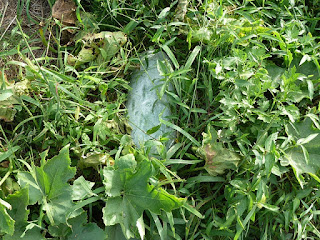日本語はここ
My super amazing activist friend is doing a workshop in the Bay Area!
Check it out if the time and space align for you.
My super amazing activist friend is doing a workshop in the Bay Area!
Check it out if the time and space align for you.
Peace making activism in Japan after Nuclear Disaster
~ Social innovation through craftsmanship: Nuclear power plants, war, health recuperation, and healing ~
Join Takafumi Tomita, a long term anti-nuclear, peace, and environmental activist, as he shares his activism experience in post-Fukushima Japan.
He hopes to share his perspectives from his experiences on his political actions, activities to protect children from radiation, and practices of revitalizing traditional food to protect and strengthen mind and body, and to exchange ideas in current forms of actions for “social innovation and craftsmanship” that inherits the spirit of Ghandian Charkha movement.
His talk includes varieties of his approach in peace-making activism such as
• health recuperation camps,
• food as medicine for radiation protection,
• miso-making and plant dyeing as a way to create local resilience and self-sustainability independent of nuclear power plant and war economy,
• farming as a place for nuturing hope from the ground
• community organizing through creating a place for workshop
• creating Earth Day at House of representatives office in Japan to invite politicians to the place making
He hopes to share his perspectives from his experiences on his political actions, activities to protect children from radiation, and practices of revitalizing traditional food to protect and strengthen mind and body, and to exchange ideas in current forms of actions for “social innovation and craftsmanship” that inherits the spirit of Ghandian Charkha movement.
His talk includes varieties of his approach in peace-making activism such as
• health recuperation camps,
• food as medicine for radiation protection,
• miso-making and plant dyeing as a way to create local resilience and self-sustainability independent of nuclear power plant and war economy,
• farming as a place for nuturing hope from the ground
• community organizing through creating a place for workshop
• creating Earth Day at House of representatives office in Japan to invite politicians to the place making
Date: Nov 4 (Sat)
Time: 17:00 ~ 21:00
Schedule:
17:00 ~ 18:30 potluck (optional)
Please bring a dish to share and your own plate/cups/utensils if you wish to join the potluck :D
18:30 ~ 19:00 Opening/Check in
19:00 ~ 21:00 Talk and Dialogue
This event is operated under a gift economy with a suggested donation of $ 5-10 dollars, which will be 100% gifted to the PLACE as our gratitude for hosting the event. Please pay this in advance on the Paypal.
TO PRE-REGISTER: Make a payment through PAYPAL and include a note: "PEACEMAKING" along with your full name and email if different from your paypal account.
PAYPAL
PAYPAL
As for Taka's time and labor, he wishes to invite you to be part of his on-going activism by supporting him in a way you feel inspired to by free-will participation fee, which may offer at the event.
He currently have his philosophy on gift in Japanese on his website but google translate does an OK job communicating his intention, so please refer to the site to read on his philosophy on activism if you are interested. (we are working on English translation so, hopefully this will come soon). CLICK HERE for the Japanese version.
ABOUT TAKA
Takafumi Tomita is a peace and environmental activist, author, and practitioner of Japanese traditional handicrafts, healing and care, fermentation, and calendar. While based in Osaka, Japan, he has travelled all over Japan holding many workshops and events to share his knowledge and passion on topics including natural and plant dyeing, miso making, relationship of our body and mind, and alternative calendars (lunar and 13moon calendar). He practices and shares plant dyeing, miso making and other traditional handicrafts as his core embodiment of peace activism to empower community and build local resilience.
You can see some of his products at here
His website (only in Japanese)
Takafumi Tomita is a peace and environmental activist, author, and practitioner of Japanese traditional handicrafts, healing and care, fermentation, and calendar. While based in Osaka, Japan, he has travelled all over Japan holding many workshops and events to share his knowledge and passion on topics including natural and plant dyeing, miso making, relationship of our body and mind, and alternative calendars (lunar and 13moon calendar). He practices and shares plant dyeing, miso making and other traditional handicrafts as his core embodiment of peace activism to empower community and build local resilience.
You can see some of his products at here
His website (only in Japanese)
Please feel free to share the event with your friends.
I look forward to seeing you at the event.
All the best,
Eri



























